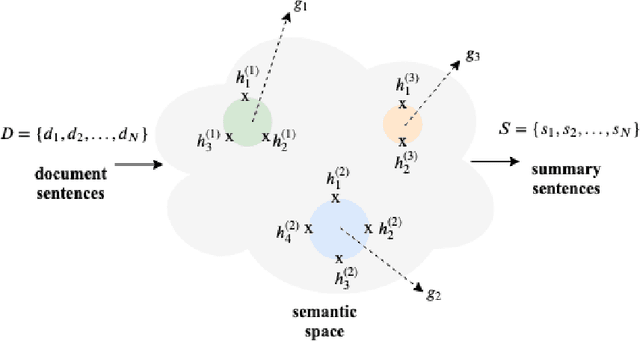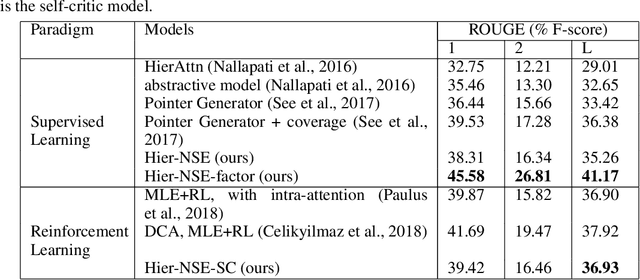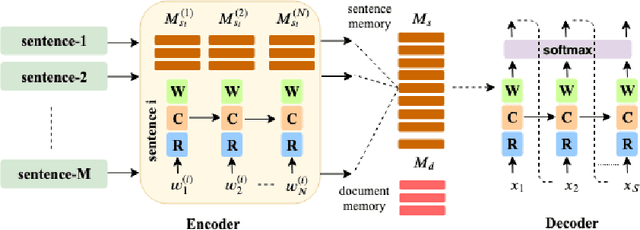Rajeev Bhatt Ambati
Assertion Detection in Multi-Label Clinical Text using Scope Localization
May 19, 2020



Abstract:Multi-label sentences (text) in the clinical domain result from the rich description of scenarios during patient care. The state-of-theart methods for assertion detection mostly address this task in the setting of a single assertion label per sentence (text). In addition, few rules based and deep learning methods perform negation/assertion scope detection on single-label text. It is a significant challenge extending these methods to address multi-label sentences without diminishing performance. Therefore, we developed a convolutional neural network (CNN) architecture to localize multiple labels and their scopes in a single stage end-to-end fashion, and demonstrate that our model performs atleast 12% better than the state-of-the-art on multi-label clinical text.
Read, Highlight and Summarize: A Hierarchical Neural Semantic Encoder-based Approach
Nov 01, 2019



Abstract:Traditional sequence-to-sequence (seq2seq) models and other variations of the attention-mechanism such as hierarchical attention have been applied to the text summarization problem. Though there is a hierarchy in the way humans use language by forming paragraphs from sentences and sentences from words, hierarchical models have usually not worked that much better than their traditional seq2seq counterparts. This effect is mainly because either the hierarchical attention mechanisms are too sparse using hard attention or noisy using soft attention. In this paper, we propose a method based on extracting the highlights of a document; a key concept that is conveyed in a few sentences. In a typical text summarization dataset consisting of documents that are 800 tokens in length (average), capturing long-term dependencies is very important, e.g., the last sentence can be grouped with the first sentence of a document to form a summary. LSTMs (Long Short-Term Memory) proved useful for machine translation. However, they often fail to capture long-term dependencies while modeling long sequences. To address these issues, we have adapted Neural Semantic Encoders (NSE) to text summarization, a class of memory-augmented neural networks by improving its functionalities and proposed a novel hierarchical NSE that outperforms similar previous models significantly. The quality of summarization was improved by augmenting linguistic factors, namely lemma, and Part-of-Speech (PoS) tags, to each word in the dataset for improved vocabulary coverage and generalization. The hierarchical NSE model on factored dataset outperformed the state-of-the-art by nearly 4 ROUGE points. We further designed and used the first GPU-based self-critical Reinforcement Learning model.
 Add to Chrome
Add to Chrome Add to Firefox
Add to Firefox Add to Edge
Add to Edge